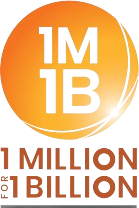[SINGAPORE] Traders in red jackets yelling prices, hand signals flying across stepped pits, and runners darting through the crowd with order slips – that was how Singapore’s derivatives market once operated.
In these open-outcry pits – so named because traders would literally shout their bids and offers across the floor – a carefully choreographed dance played out each trading day, from 1984 until their closure in 2006.
When an order came in from a client – say, to sell 100 lots of Nikkei 225 futures – a broker would shout or signal the intention to offload the contract to a group known as order fillers, or “locals”.
The locals – traders who used their own capital to buy and sell derivatives, often at high frequency – would respond with their best bids, yelling or flashing hand signals until a price was agreed.
Details of the trade were then scribbled onto a card, passed to a clerk, and handed to the clearing broker of the locals, who would input the trade into the exchange’s matching system. Exchange staff would then update the official price boards.
Where noise overwhelmed, hand signals took over.
BT in your inbox

Start and end each day with the latest news stories and analyses delivered straight to your inbox.
Traders relied on a system of universally recognised gestures: a palm facing inwards signalled a buy order, while an outward-facing palm meant sell. Numbers were indicated with fingers – raised above the head for larger quantities, or near the chin for smaller ones.
At their peak, individual pits could hold more than 300 people, all shouting, signalling and scrambling to trade contracts at the best possible price, said Rama Pillai, managing director at SGX Group.
Pillai joined the Singapore International Monetary Exchange (Simex) in 1991.
Established in 1984 as Singapore’s first derivatives exchange, Simex merged in 1999 with the Stock Exchange of Singapore and Securities Clearing and Computer Services – forming today’s Singapore Exchange (SGX).
Semi-circular bowls
The trading pits, Pillai recalled, were not just flat floors. They were built in a semi-circular bowl with rising steps, designed to control the flow of information within the frenetic environment.
The locals – clad in red jackets – stood at the centre of the pit.
Andy Tan, chief executive officer of Synergy Link Capital, who began his trading career in 1991 as a broker for a local bank, said: “You could think of them as high-frequency traders”.
These locals played a vital role in the market ecosystem, providing liquidity through their constant buying and selling – much like market makers today, explained Tan.
Eventually, however, electronic trading took over. What once took seconds, minutes or even hours could now be executed with a single click.
The last open-outcry pit shut in September 2006, nearly two years after SGX launched its electronic migration in November 2004.
But the shift from organised chaos to code came with its own set of challenges.
As SGX began phasing out its trading pits in the early 2000s, one key question emerged: how to help floor traders adapt to electronic systems. Rather than let the community fade – as it had in other markets – Pillai and his team rolled out a structured training programme, funded in part by a government grant.
Traders were introduced to handheld electronic devices, and even attended classes taught by a seasoned Chicago floor trader flown in specifically for the initiative.
The result? While exchanges in London and Australia saw 80 per cent of their floor communities disappear within a year of going digital, Singapore experienced the reverse.
Pillai said: “80 per cent of the community continued to trade, even one year after we went away from the floor.”
IPO frenzy
While Simex’s open-outcry pits were bustling with professionals, many retail investors had their first brush with the markets through initial public offering (IPOs) – and a pair of manila envelopes.
“It was a very manual process,” recalled S Nallakaruppan, president of the Society of Remisiers (Singapore), who began his career in 1994.
Back then, applying for IPO shares involved filling up an application form, placing it in one envelope, and enclosing a cashier’s order in another.
“If you’re successful, then they will process the cashier’s order,” said Nallakaruppan. “Otherwise, they will return it.”
The application forms were completely manual, with prospectuses distributed at booths set up in Raffles Place, said June Sim, managing director at Singapore Exchange Regulation.
The excitement around IPOs was palpable. “Every two, three weeks, you’d have one IPO on the SGX,” said Nallakaruppan. Many were hugely oversubscribed – “50, 100, 400 times” – and receiving an allocation often meant guaranteed returns.
“The moment you applied (and) you were allocated the share, the chances of you making money were very high,” explained Nallakaruppan.
The IPO of Singtel in 1993 was a standout moment for both Nallakaruppan and Sim.
As part of a government push to promote wider share ownership, all Singapore citizens were eligible to subscribe to the shares at a discounted price.
The “sheer size” of the offering – with over 1.4 million Singaporeans taking up shares – triggered a “deluge” of applications, said Sim, with community centres even roped in to help locals open securities accounts.
The Singtel IPO also marked the first large-scale use of the Electronic Share Application facility, which allowed the public to apply for new shares through automated teller machines – removing the need for cashier’s orders or manual application forms.




